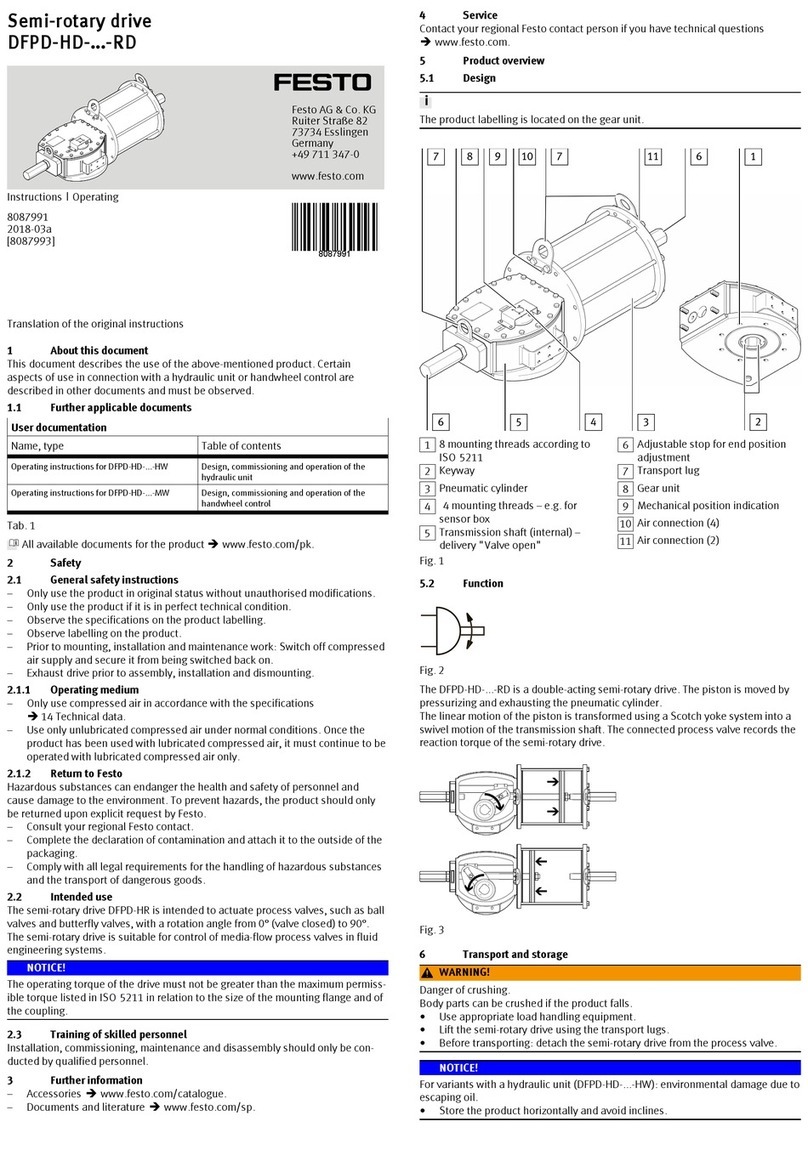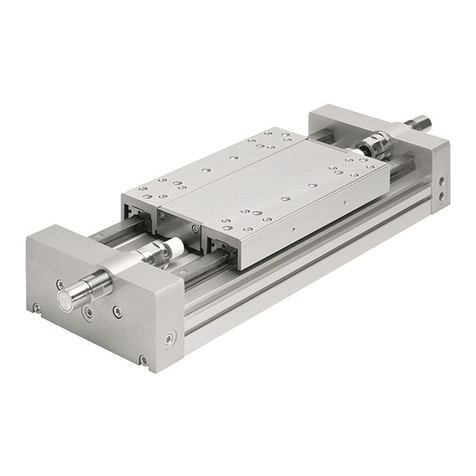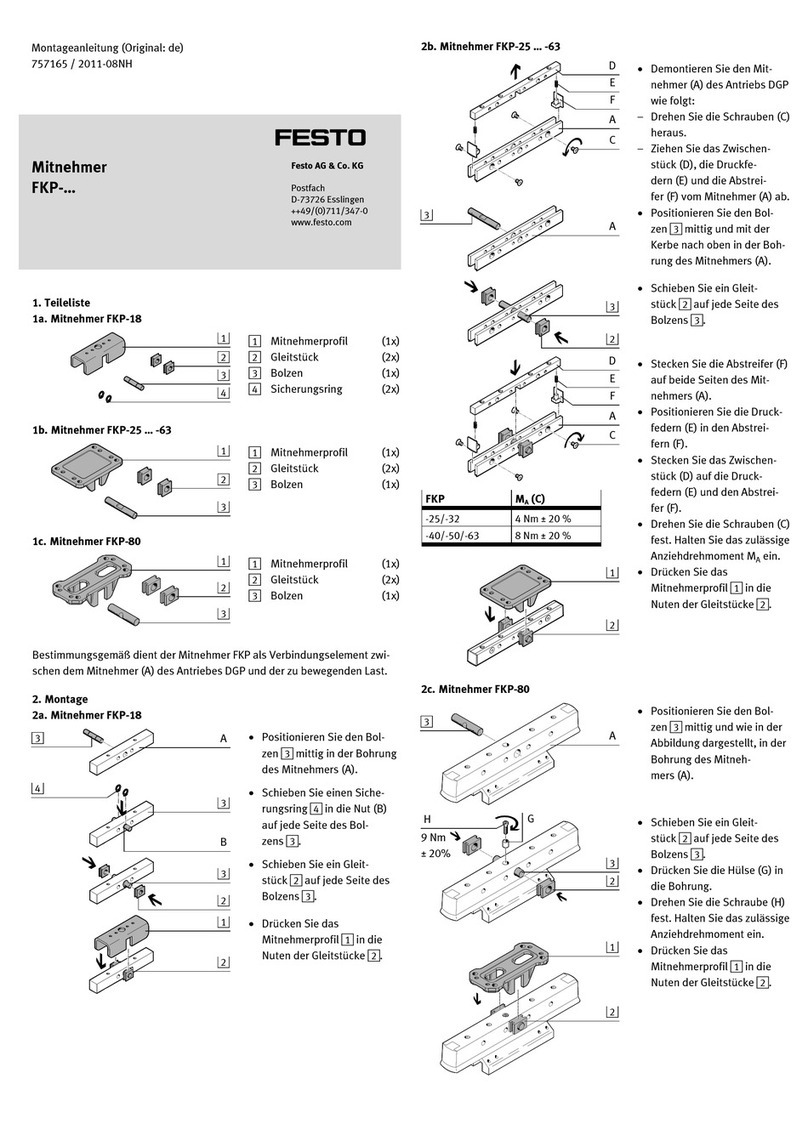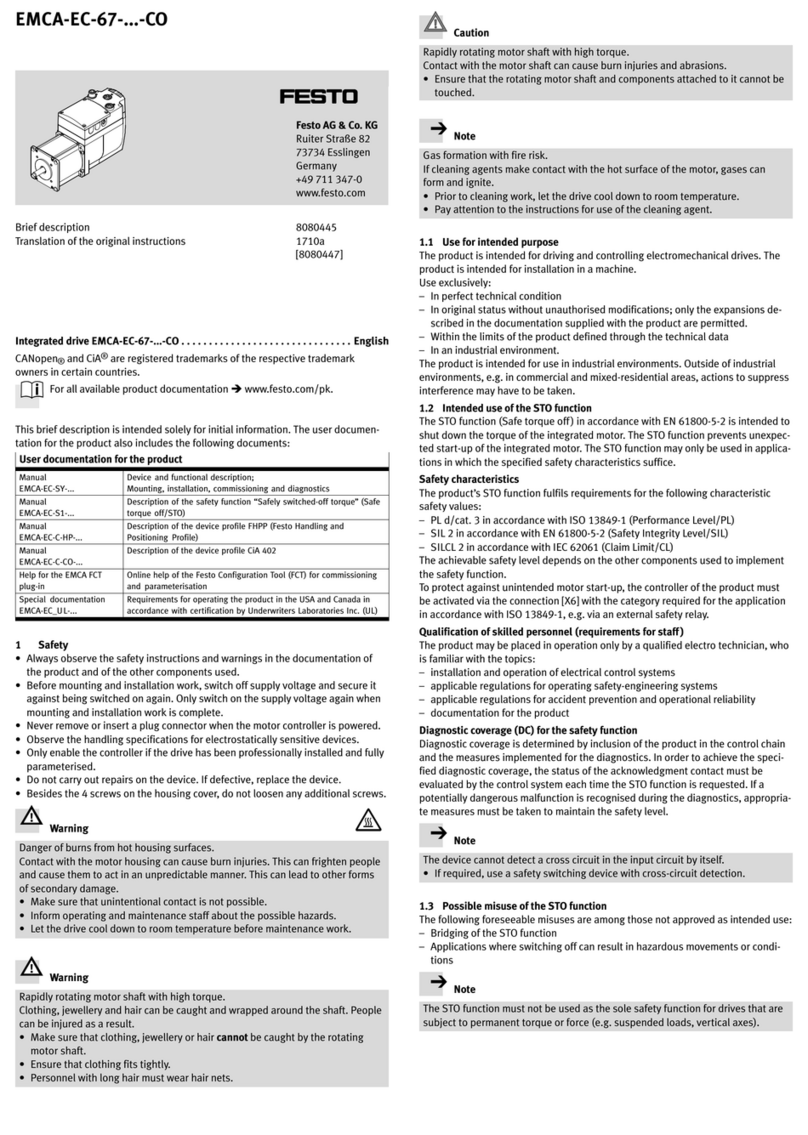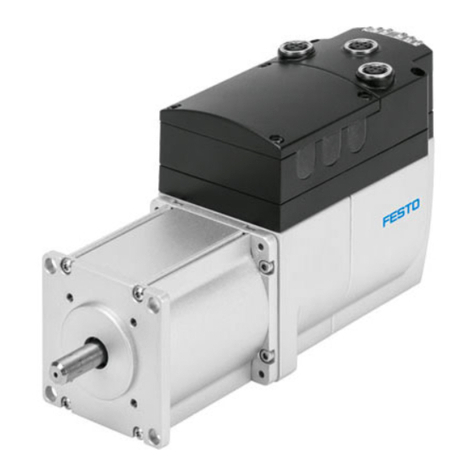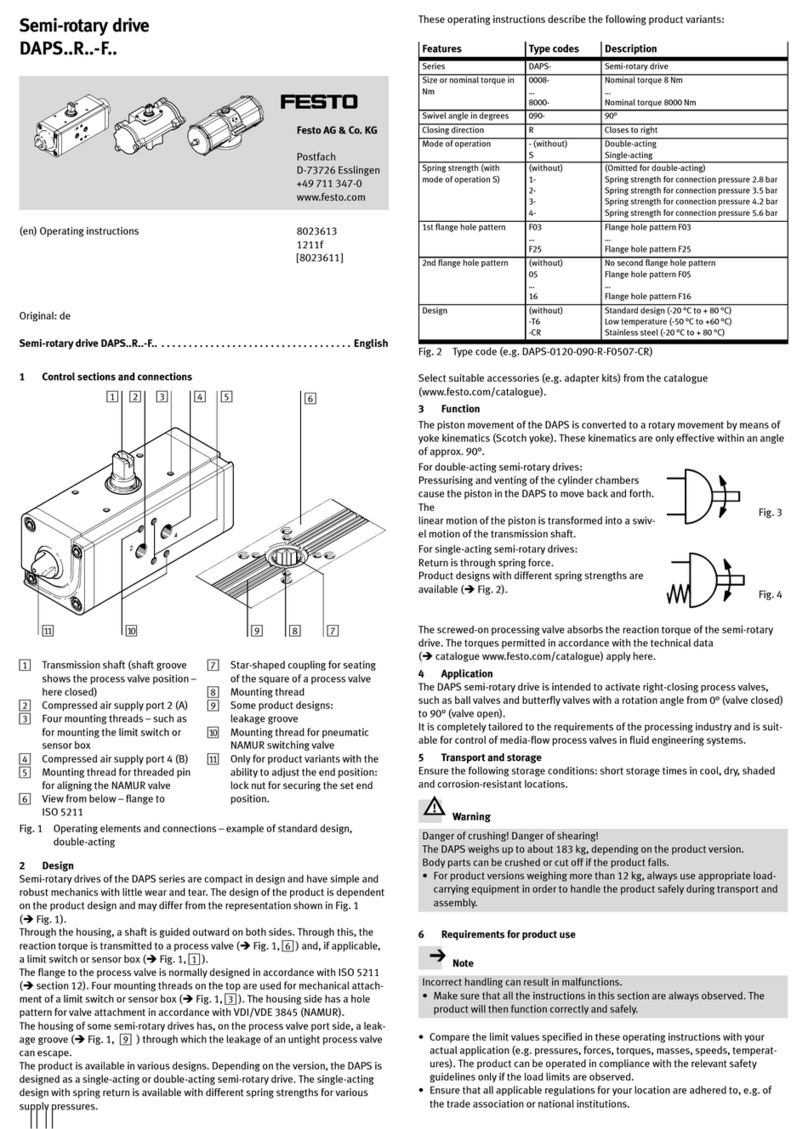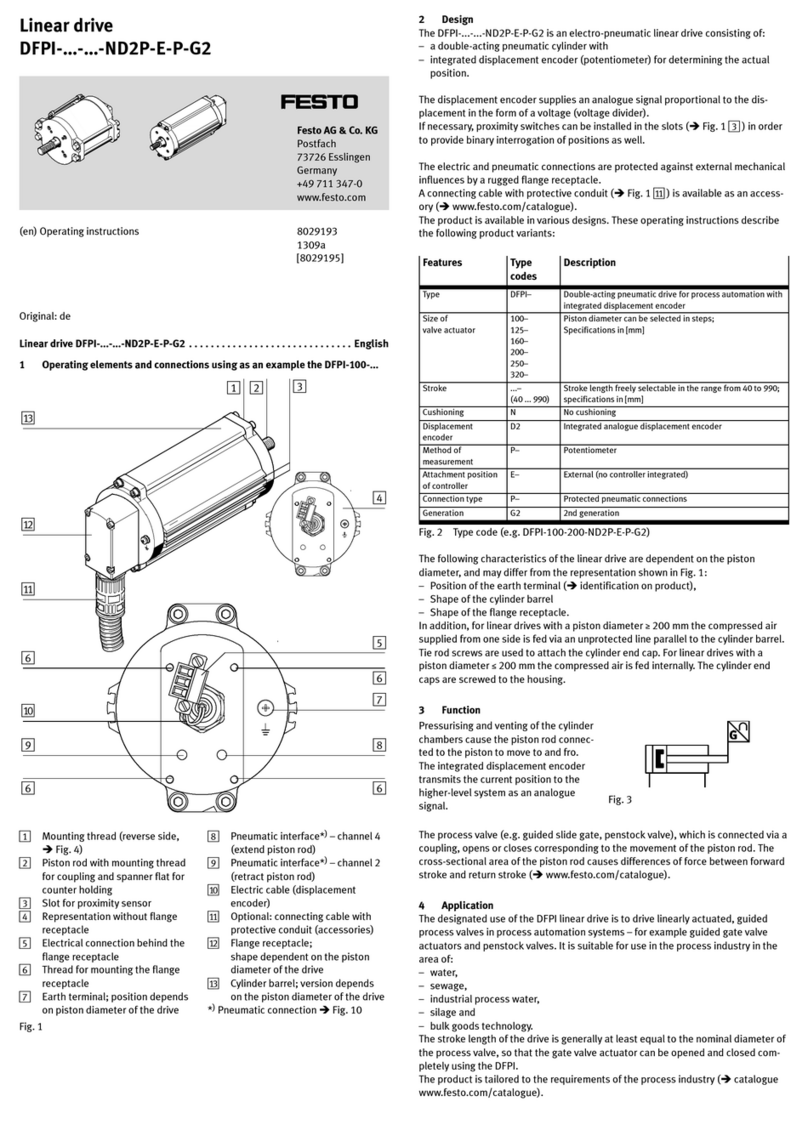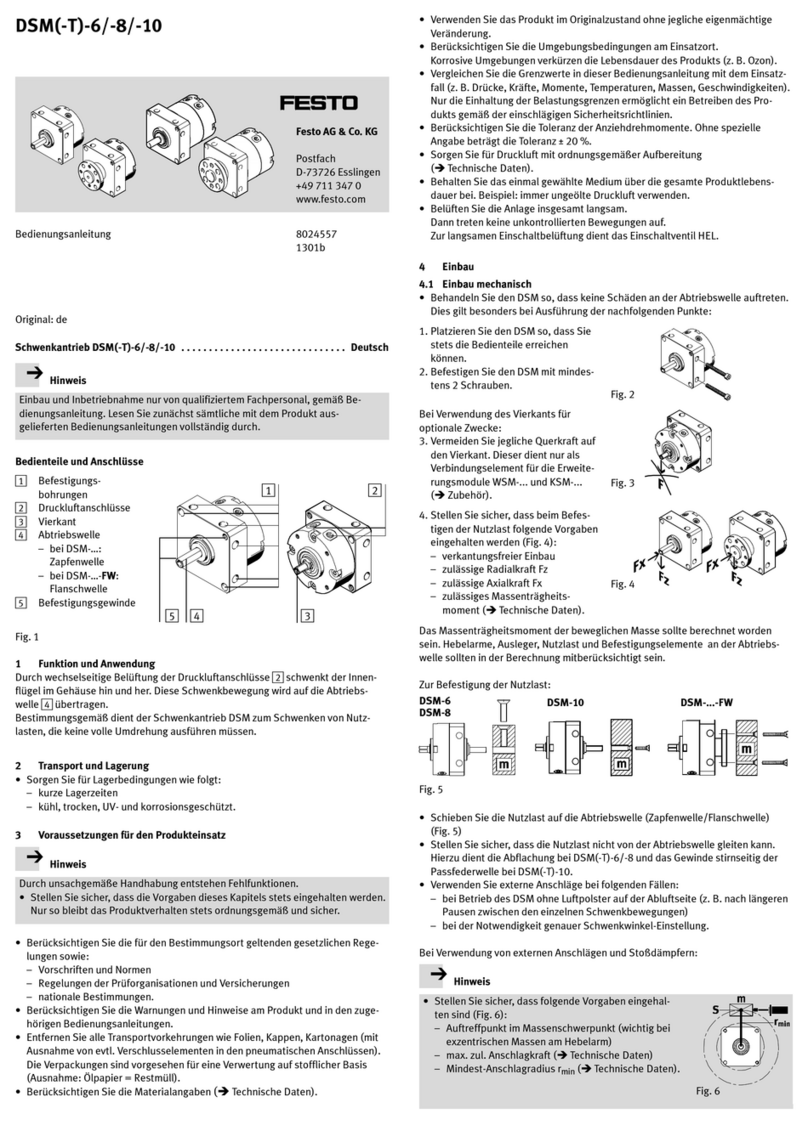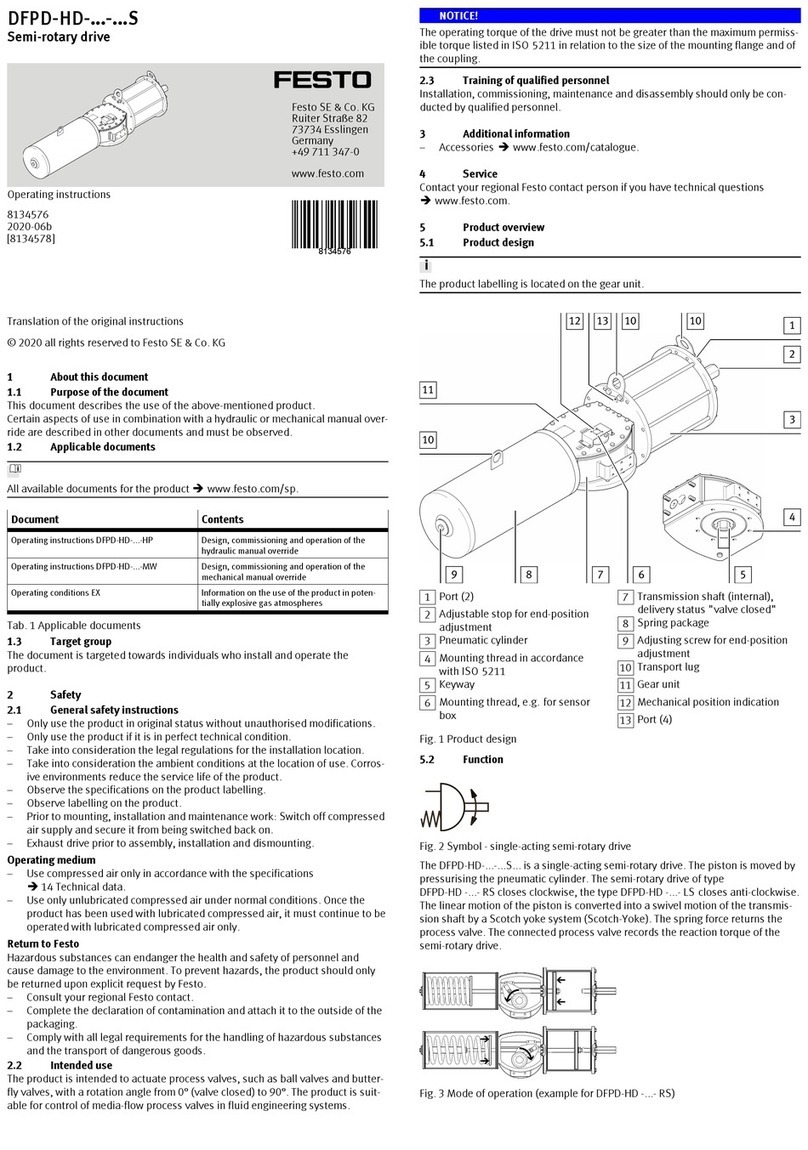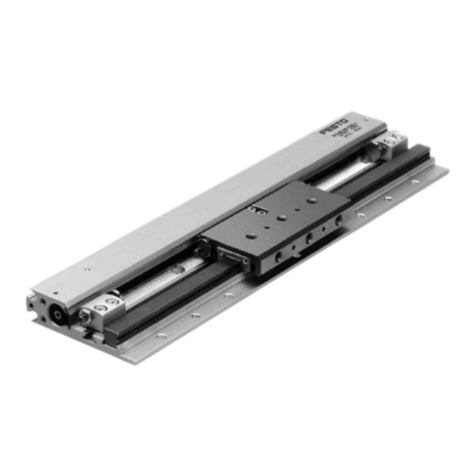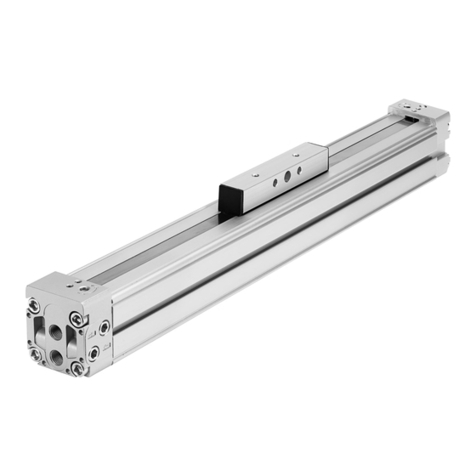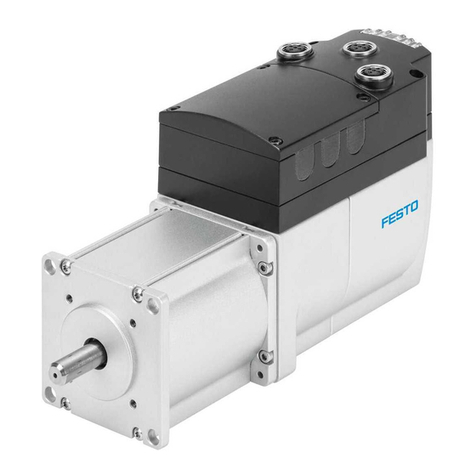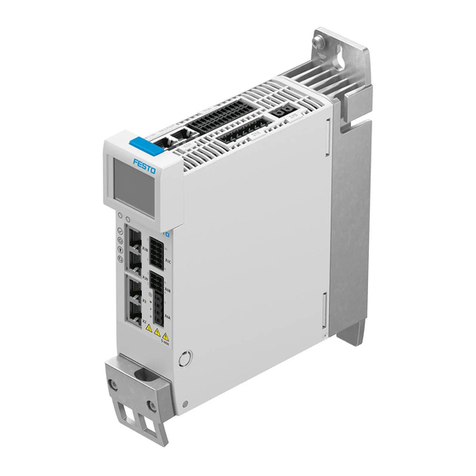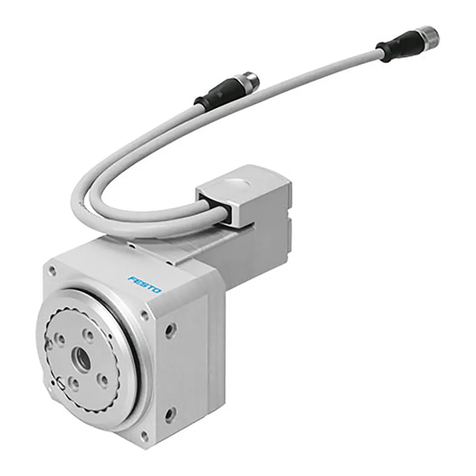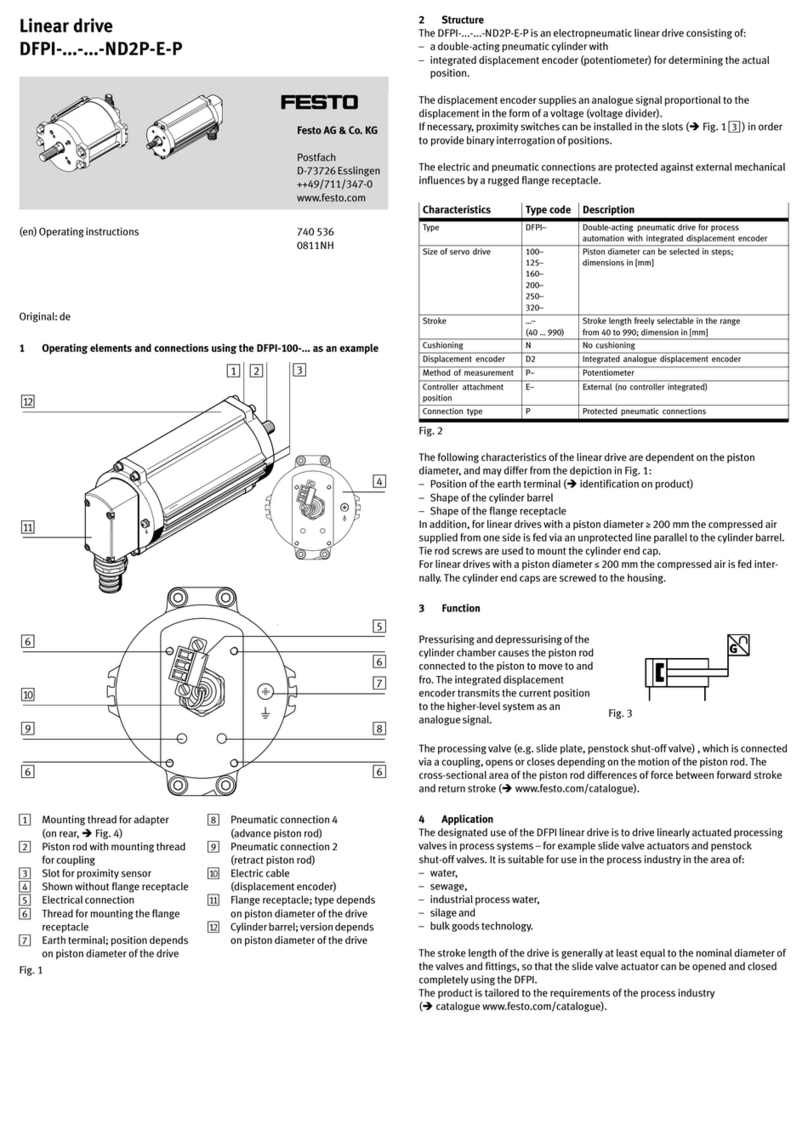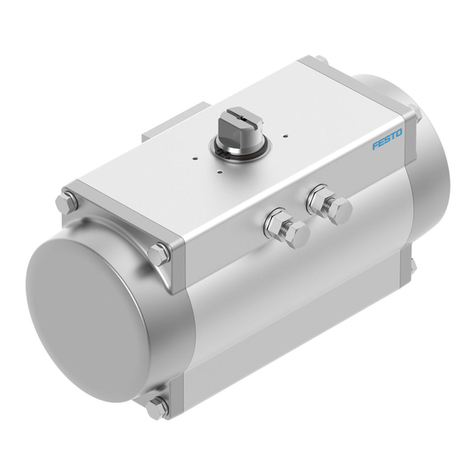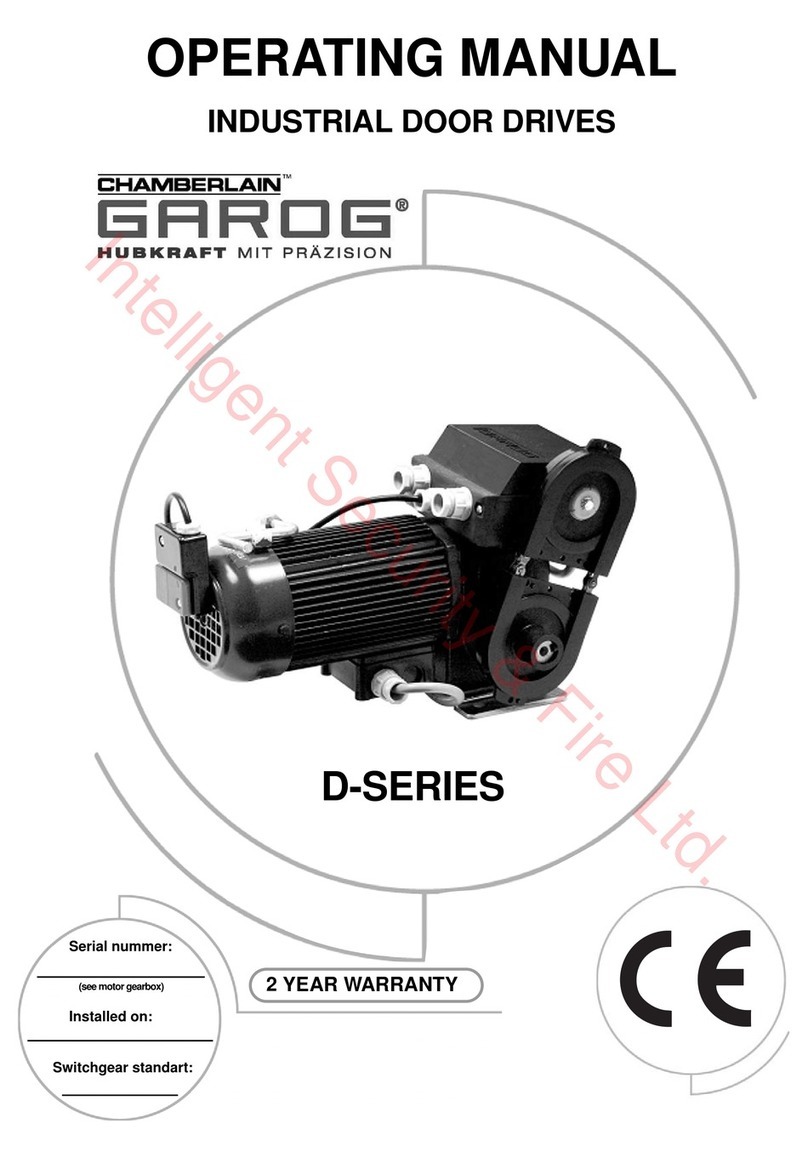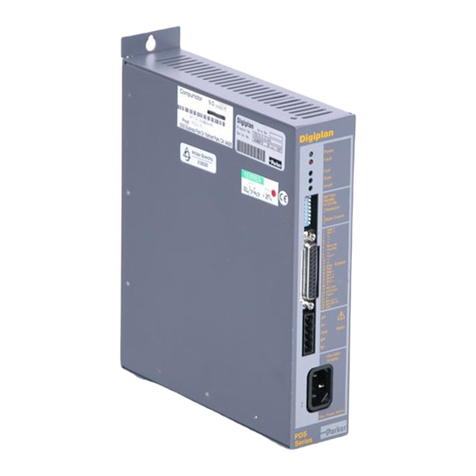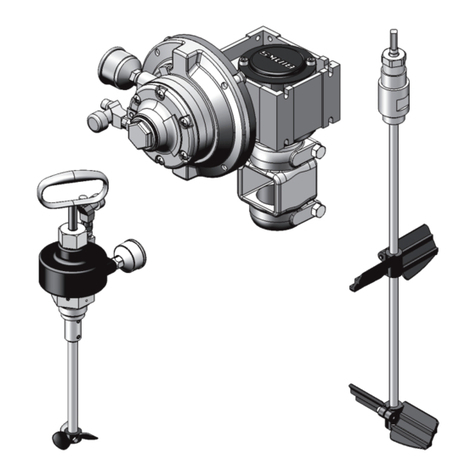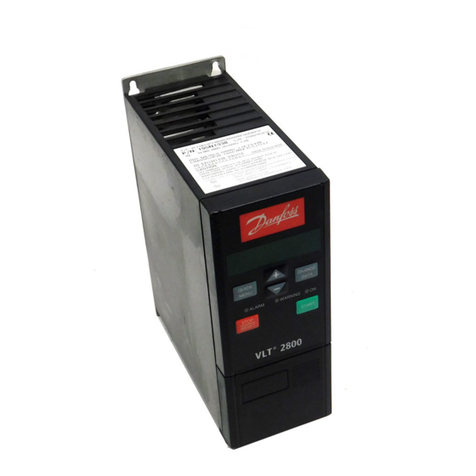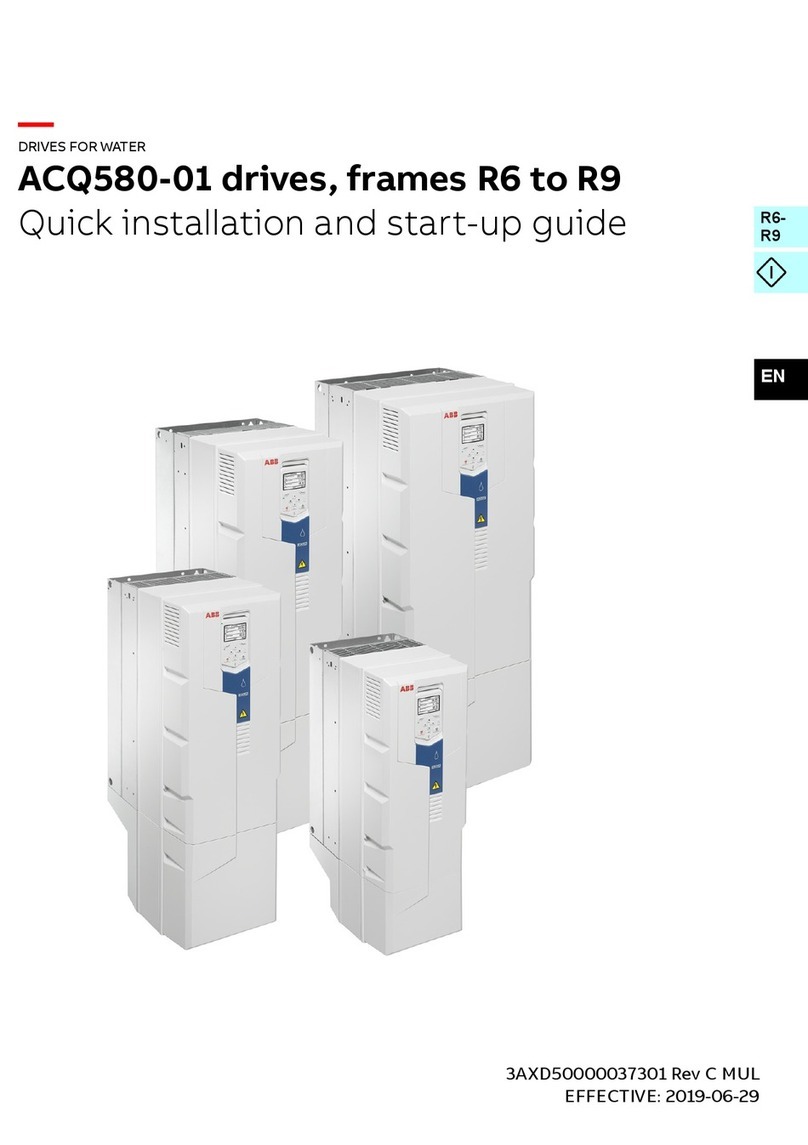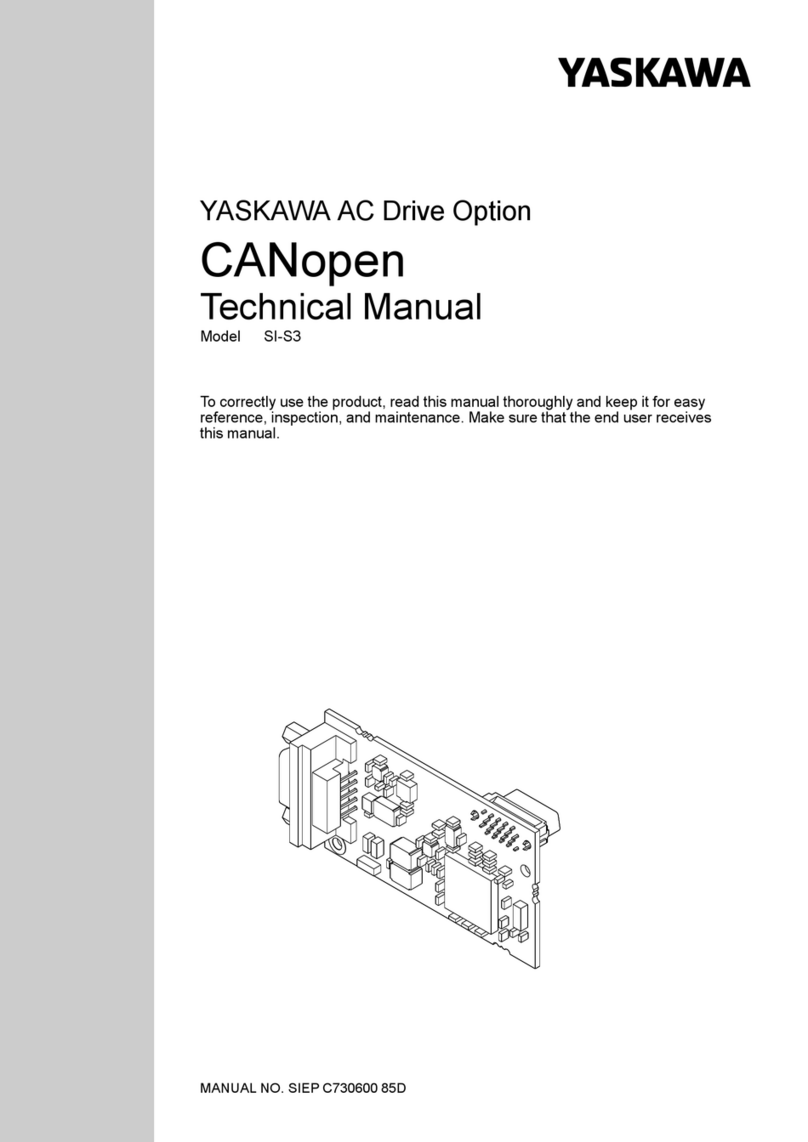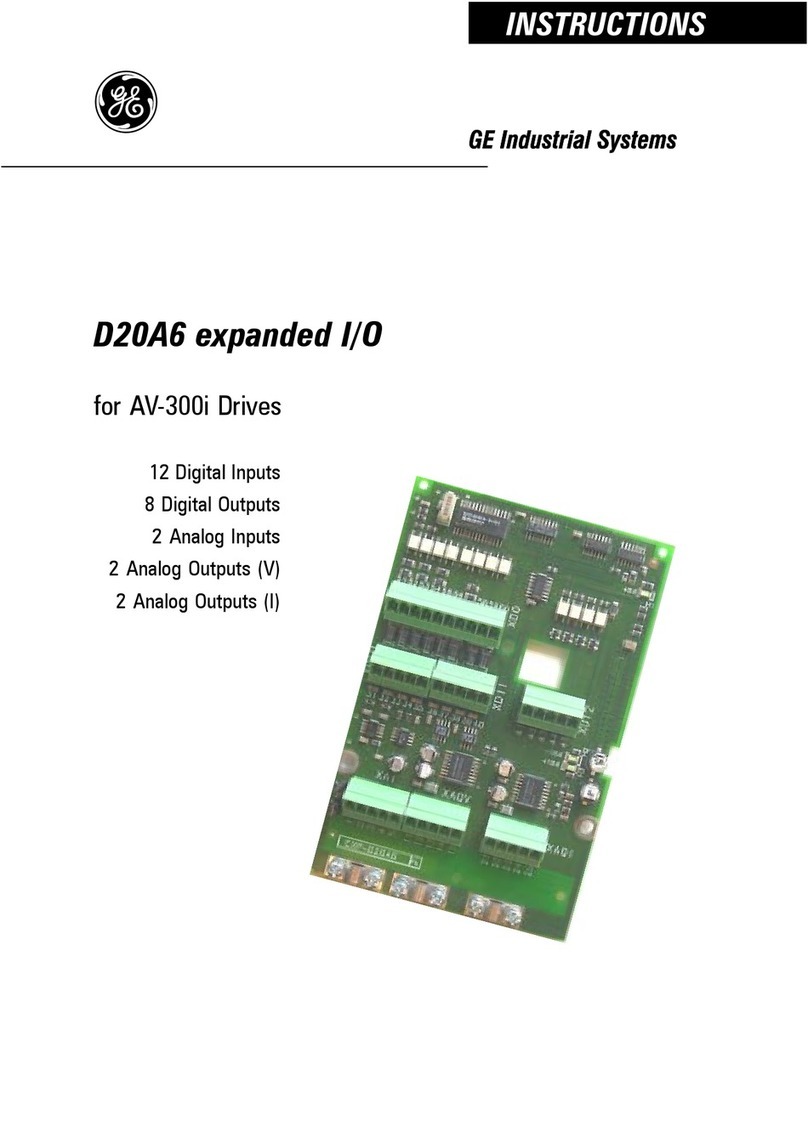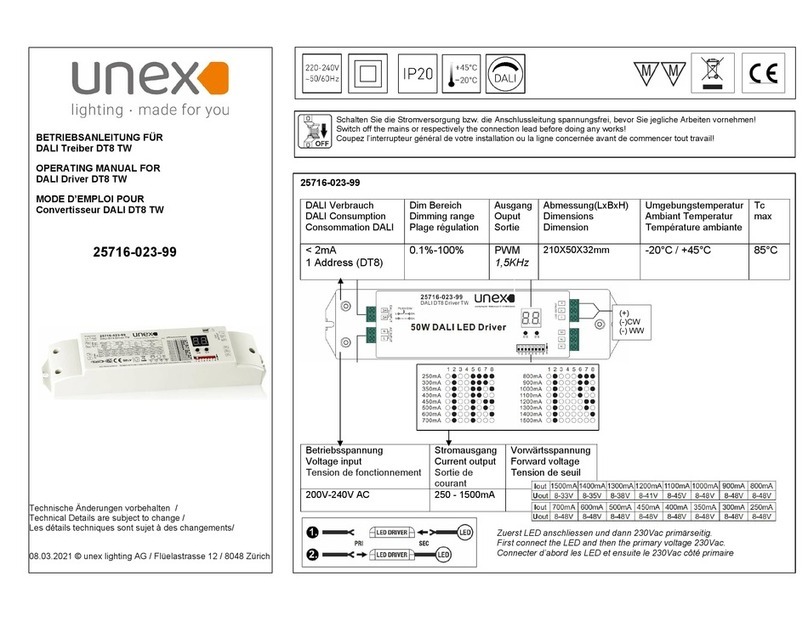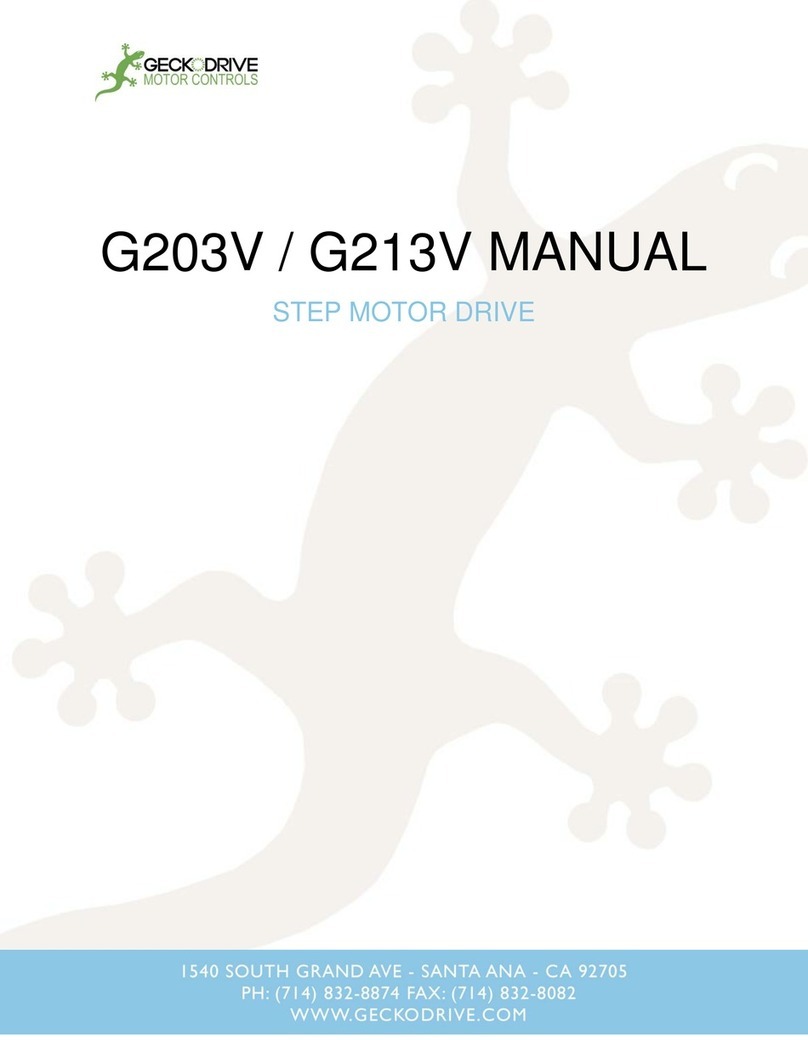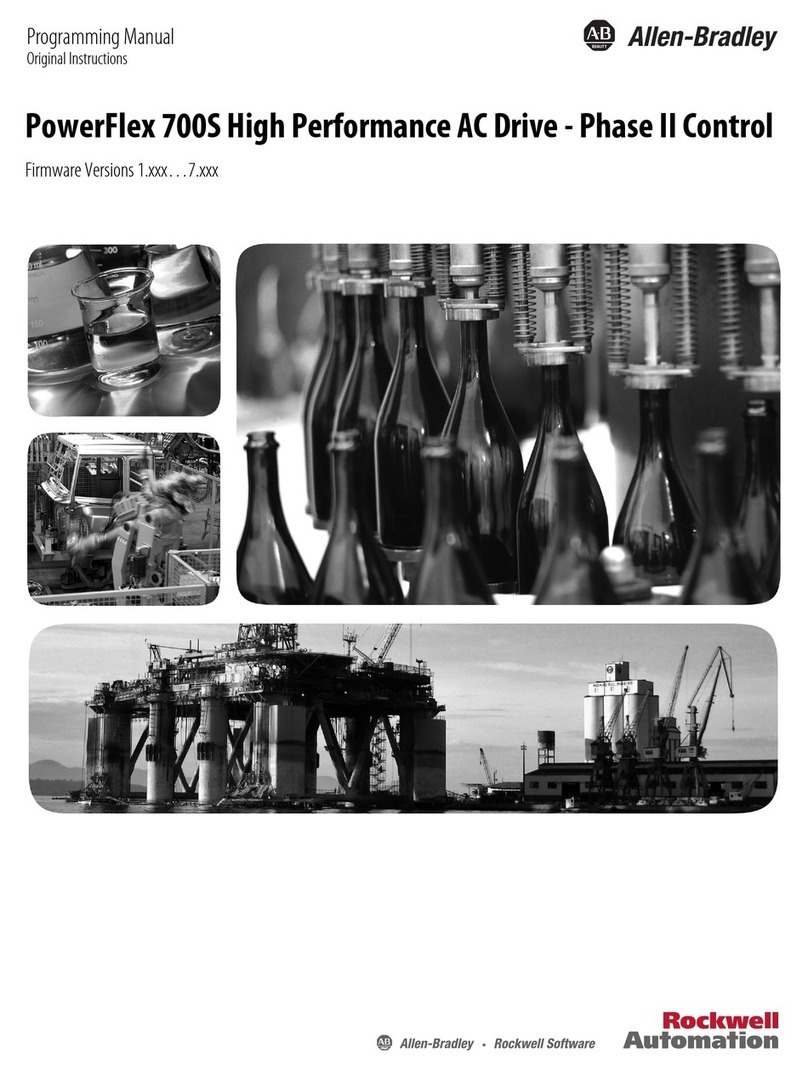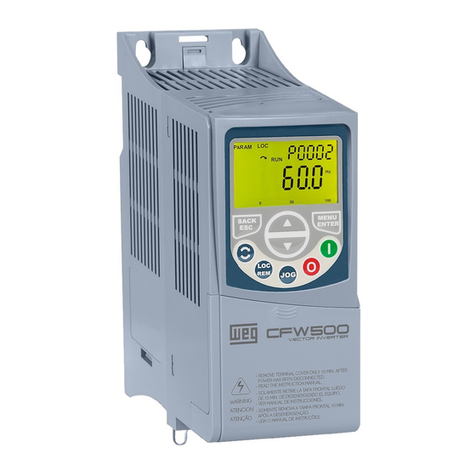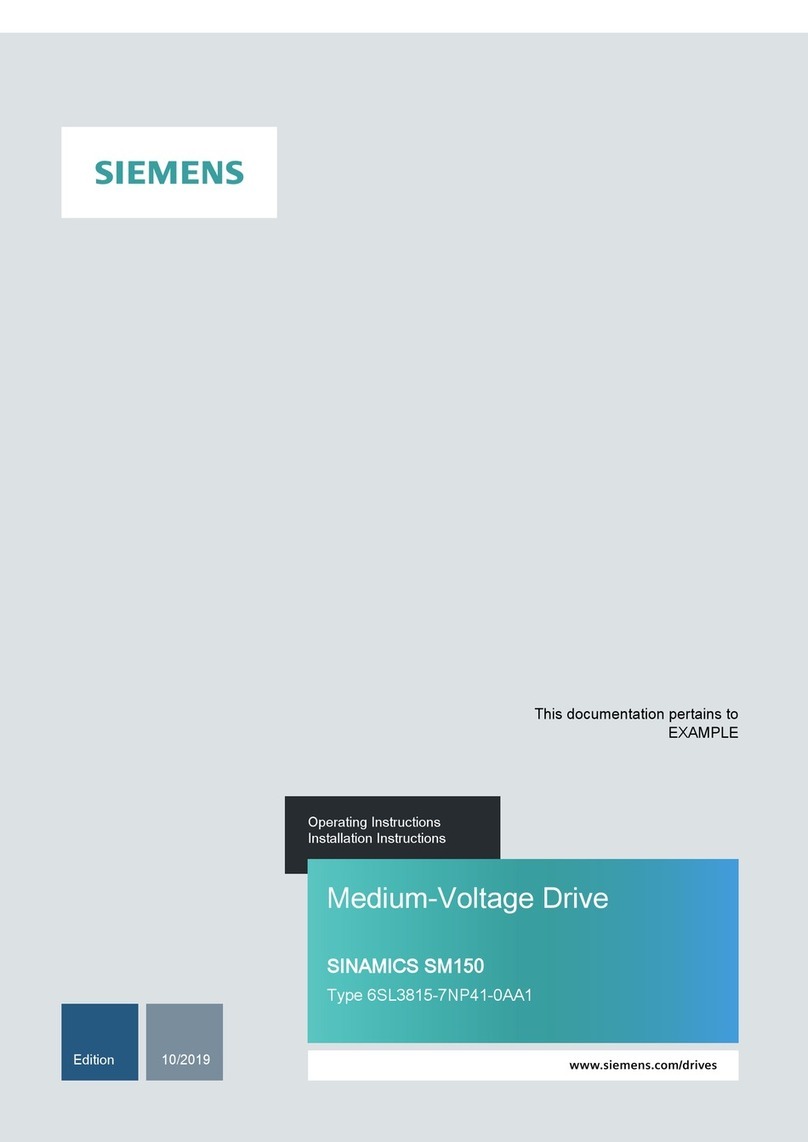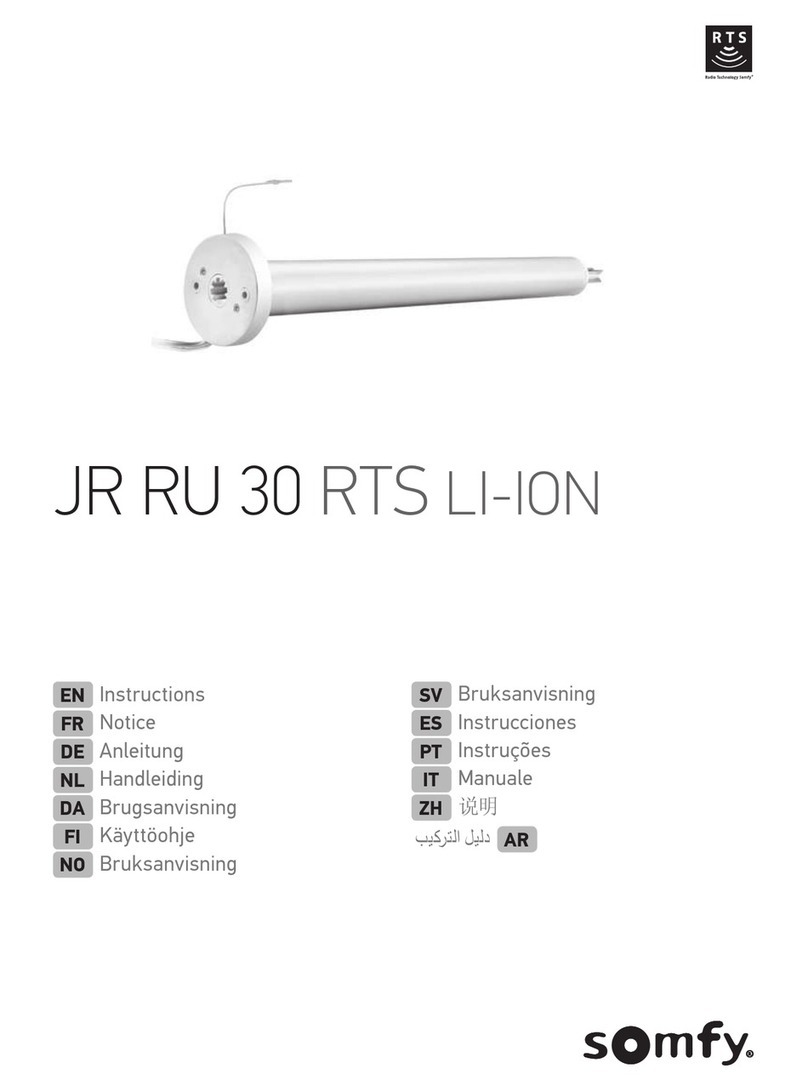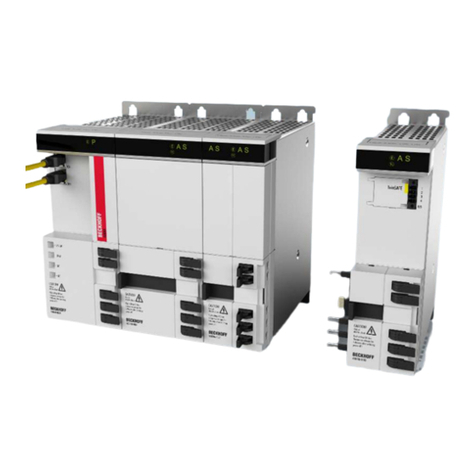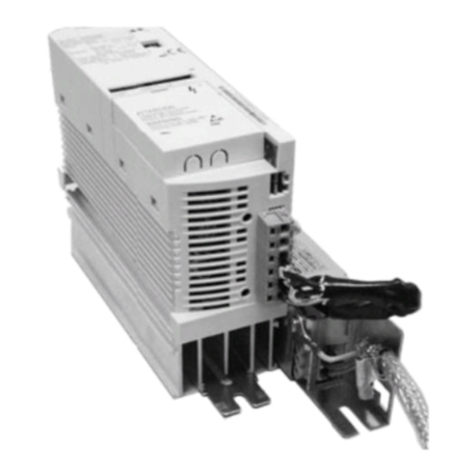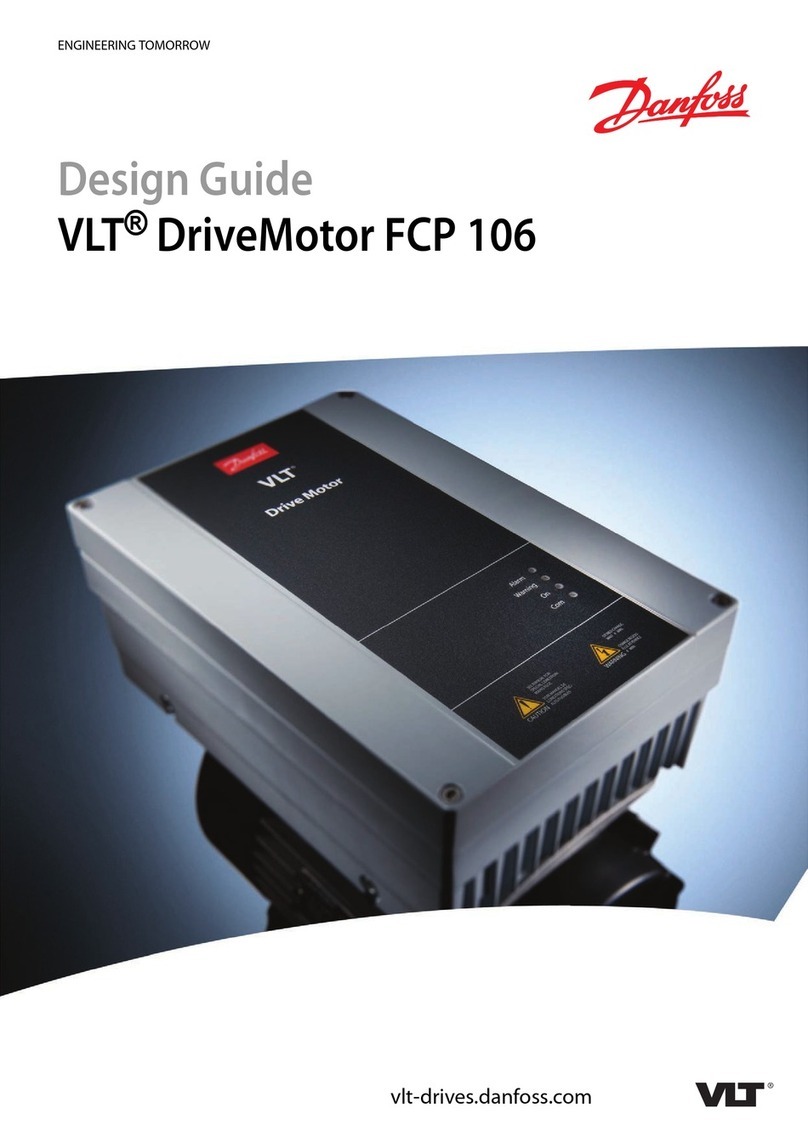
6. Tighten the screws at both the semi-rotary drive and process valve crosswise.
– Tightening torque è Tab. 2.
7. After attaching the semi-rotary drive: check the direction of rotation of the
semi-rotary drive and position of the process valve. If the semi-rotary drive
does not run in the required direction of rotation,
è 7.2.1 Correcting the direction of rotation of the semi-rotary drive.
7.2.1 Correcting the direction of rotation of the semi-rotary drive
DAPS-...-R-... (double-acting)
1. Remove the solenoid valve and rotate through 180°.
2. Observe position of threaded pin for orienting a NAMUR valve.
3. Mount the solenoid valve again.
DAPS-...-RS-... (single-acting)
1. Remove the screws on the drive side.
2. Rotate drive through 90° while still connected to the process valve directly or
by means of the shaft extension.
3. Tighten the screws.
7.3 Tightening torques of the retaining screws
Thread Tightening torque [Nm]
M5 5…6
M6 10…11
M8 20…23
M10 45…50
M12 80…85
M14 125…135
M16 190…200
M20 370…390
Tab. 2
8 Installation
8.1 Pneumatic installation
Double-acting semi-rotary drive DAPS-...-R-
– Air supply at connection 4 (B): rotational movement clockwise.
– Air supply at connection 2 (A): rotational movement anti-clockwise.
Single-acting semi-rotary drive DAPS-...-RS-
– Air supply at connection 4 (B): rotational movement anti-clockwise
– Spring return: rotational movement clockwise
• Mount a filter element on the exhaust port2(A) to prevent ingress of dirt.
9 Commissioning
9.1 Requirements
– The drive is fully mounted and connected.
9.2 Commissioning the drive
1. Pressurise drive slowly.
2. Check correct function at low travel speed.
– Direction of rotation of drive
– Position of process valve
9.3 Adjustment of end positions
9.3.1 DAPS-...-R-... (double-acting) – size 0015…1920
End position for clockwise rotation – close process valve
1Lock nut with sealing ring
2Threaded rod
3Piston
4Port2 (A)
5Port4 (B)
Fig. 9 DAPS-…-R-… – close process valve
1. Supply compressed air to port2(A).
ÄProcess valve closes. Pistons move to the outer end position.
2. Loosen the lock nut with sealing ring.
ÄLoosening the lock nut retains the current setting.
3. Supply compressed air to port4(B).
ÄProcess valve opens. Pistons move to the inner end position.
4. Adjust end position.
– Rotating the threaded rod clockwise reduces the swivel angle.
– Rotating the threaded rod anti-clockwise increases the swivel angle.
Depending on the product, a full revolution of the threaded rod changes the
swivel angle by approx. 1.5…3.5°.
5. Supply compressed air to port2(A).
ÄProcess valve closes. Pistons move to the outer end position against the
threaded rod.
6. Check position of the process valve.
To modify the swivel angle, repeat steps 3 and 4.
7. Tighten the lock nut with sealing ring on the threaded rod.
– Tightening torque: 5Nm
9.3.2 DAPS-...-RS... (single-acting) – size 0015…0960
End position for clockwise rotation – close process valve
1Lock nut with sealing ring
2Threaded rod
3Spring cup
4Piston
5Port2 (A)
6Port4 (B)
Fig. 10 DAPS-…-RS-… – close process valve
1. Exhaust the drive.
ÄProcess valve closes. Pistons move to the inner end position under spring
return, until the spring cup is held by the threaded rod or piston.
2. Loosen the lock nut with sealing ring.
ÄLoosening the lock nut retains the current setting.
3. Supply compressed air.
ÄProcess valve opens. Pistons move to the outer end position.
4. Adjust end position.
– Rotating the threaded rod clockwise increases the spring travel.
– Rotating the threaded rod anti-clockwise reduces the spring travel.
Depending on the product, a full revolution of the threaded rod changes the
swivel angle by approx. 1.5…3.5°.
5. Exhaust the drive.
ÄProcess valve closes. Pistons move to the inner end position under spring
return, until the spring cup is held by the threaded rod or piston.
6. Check position of the process valve.
To modify the swivel angle, repeat steps 3…6.
7. Tighten the lock nut with sealing ring on the threaded rod.
– Tightening torque: 5Nm
End position for anti-clockwise rotation – open process valve
1Lock nut with sealing ring
2Threaded rod
3Spring cup
4Piston
5Adjustment range for outer end
position (è 14 technical data)
Fig. 11 DAPS-…-RS-… – open process valve
1. Supply compressed air.
ÄProcess valve closes. Pistons move to the outer end position.
2. Loosen the lock nut with sealing ring.
ÄLoosening the lock nut retains the current setting.
3. Exhaust the DAPS.
ÄProcess valve closes. Pistons move to the inner end position.
4. Adjust end position.
– Rotating the threaded rod clockwise reduces the swivel angle.
– Rotating the threaded rod anti-clockwise increases the swivel angle.
Depending on the product, a full revolution of the threaded rod changes the
swivel angle by approx. 1.5…3.5°.
